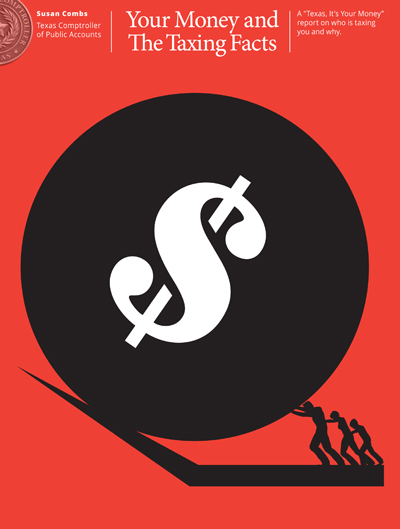 Texas Comptroller Susan Combs recently released the final report in the “Texas, It’s Your Money” series titled Your Money and Pension Obligations. Combs also announced recommendations aimed at improving government transparency for legislative leadership to consider in the upcoming session.
Texas Comptroller Susan Combs recently released the final report in the “Texas, It’s Your Money” series titled Your Money and Pension Obligations. Combs also announced recommendations aimed at improving government transparency for legislative leadership to consider in the upcoming session.
This latest report provides a detailed look at state and local pension programs, while the overall report series offers Texans a clear picture of who is taxing them, how their money is being spent, and how public debt is growing. Each one of the reports focuses on financial obligations of taxpayers and provides suggestions on how government should provide more transparency regarding those obligations. Combs is now recommending the Legislature consider these suggestions in the upcoming session.
“What comes through in each of these reports is a set of recommendations which shows where we fall short of talking straight to the taxpayer and providing a more transparent government,” Combs said. “I am working with leadership on legislative ideas to embody these recommendations and principles.”
The first of these reports, Your Money and The Taxing Facts, examines all the local entities that contribute to a taxpayer’s bill, such as cities, counties, special-purpose districts and transit authorities, and identifies trends in spending. Combs is calling for these taxing entities to post more information on the Web, and for local taxing districts to send that information to the Comptroller’s office so the agency can put all local sales and property tax information on one public website.
The second report, Your Money and Local Debt, zeroes in on the debt issued by local governments. Combs suggests ballots for new debt contain information both on current and proposed debt obligations, including the following: the debt’s stated purpose, total outstanding debt, total debt per capita, and annual debt service requirements.
The third report, Your Money and Education Debt, examines the indebtedness of Texas’ public schools and higher education institutions. Because most of this debt is used for school construction, Combs wants information on the cost of each facility, cost per square foot, and space per student to be posted on the Web.
The fourth report, Your Money and Pension Obligations, looks at public pension debt, which has made national headlines recently. Combs urges public pension funds in Texas to report on a public website such line items as their actual investment returns for the past 10 years and the plans’ assumed rates of return.
“We want to give taxpayers the same kind of information on government debt and spending that they would need to prepare and balance their own budgets, to handle a mortgage or buy a car – a clear knowledge of what we’re spending and what we owe,” Combs said. “It’s your money. If you don’t know how it’s being used, you need to know. And it’s our job to let you know.”
Each of the four reports along with interactive website tools can be viewed at www.texasitsyourmoney.org.









